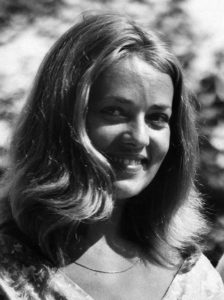Western civilization cannot do without him: Baltimore’s legendary polymath Richard Macksey at 87
Tuesday, April 2nd, 2019It was a privilege to spend hours talking with Johns Hopkins Prof. Richard Macksey for Evolution of Desire: A Life of René Girard. Now that I’ve read Kate Dwyer’s “Meet the Man Who Introduced Derrida to America: On the Remarkable Legacy of Richard Macksey,” a new profile of the 87-year-old polymath in LitHub, I’m convinced Western civilization cannot do without him.
I’ve written about him on the Book Haven here and here – with a film clip here. (A quick note, however: The 1966 Baltimore conference that brought Derrida to America was the work of a triumvirate: René Girard, Macksey, and Eugenio Donato. That story was told in the chapter published as “The French Invasion” in Quarterly Conversation, December 2017.)
 What I wrote about Dick Macksey in Evolution of Desire:
What I wrote about Dick Macksey in Evolution of Desire:
He shared his memories from his home stuffed with seventy thousand books and manuscripts in English, Russian, French, German, Italian, Spanish, even Babylonian cuneiform (he can read and write in six languages, and laconically noted that his collection includes an autographed copy of The Canterbury Tales and a presentation copy of the Ten Commandments). A generous and legendary teacher, he still holds seminars in this spacious landmark home, even though the house is so crowded that a visitor can’t walk more than a few feet in any direction without running into a bookshelf. He lives, according to a colleague, on “three hours of sleep and pipe smoke.” He writes as prolifically as he reads, publishing fiction and poetry as well as scholarly works. No topic bores him, and his memory is astonishing. Milton Eisenhower, brother of the president and Johns Hopkins’s president at the time of the conference, commented that going to Dick Macksey with a question was like going to a fire hydrant for a glass of water.
Kate Dwyer was a student of Macksey’s three years ago, which warms the narrative like hands curled around a snifter warm cognac. Here’s what she says about the professor and the legendary home known as “Chez Macksey”:
The lore around Macksey and his library has an air of myth—some alumni describe knocking over a sheet of paper to discover original correspondence with D.H. Lawrence (who died the year before Macksey was born), while others swear there was an original Picasso sketch in his bathroom at one time. Four-foot Chinese scrolls, tiny model skeletons, antique theater binoculars. The valuable pieces are no longer in the house; they have been locked up in Special Collections on campus. One time during class, I myself picked up the nearest book and discovered it was an inscribed advance copy of his friend Oliver Sacks’ book, Seeing Voices. The objects in his house speak to his interests, which is to say he is interested in everything.
That is not an exaggeration.
“When you listen to him talk, he begins in one place, and then it’s as though he’s crossed the room and gone to a different section of the library and pulled out a book on a different topic,” the author Jessie Chaffee (Florence in Ecstasy) noted. “He’ll take you down a path that is surprising, and then another, and another . . . until you realize that they’re all connected.”
***
“There was always this rumor that when he was up for his PhD and doing his orals, they couldn’t stump him on anything,” the Oscar-nominated cinematographer Caleb Deschanel, a former student, said. “Finally, exasperated, one of his interviewers decided to ask him about 16th-century French cooking or something and he goes, ‘well that’s great that you should ask that question, because it happens to be one of my hobbies.’”
 Deschanel studied with Macksey during the 1960s. “I’ve always felt that, when you read a script, your first ideas tend to be really cliché,” he said. “What you want to do is get away from that and apply some of the ideas from all the things you’ve learned over the years and try doing something totally against that first idea.” He credits this strategy to time in Macksey’s library. “He would relate some imagery in Turgenev to some paintings that were done in Germany in the 1920s.”
Deschanel studied with Macksey during the 1960s. “I’ve always felt that, when you read a script, your first ideas tend to be really cliché,” he said. “What you want to do is get away from that and apply some of the ideas from all the things you’ve learned over the years and try doing something totally against that first idea.” He credits this strategy to time in Macksey’s library. “He would relate some imagery in Turgenev to some paintings that were done in Germany in the 1920s.”
***
“The future and the past are bound together,” Dr. Macksey said. “One thing I like to point to is Chekhov’s little story, ‘Student.’ It’s only about four pages or so, and it’s about somebody who discovers the power of narrative to bind, not just people, but whole eras together. It sounds very pretentious, but it’s an unpretentious story, and it can change one’s life.”
Read the whole profile here. You must.




 Stanford Magazine has spoken on
Stanford Magazine has spoken on 

